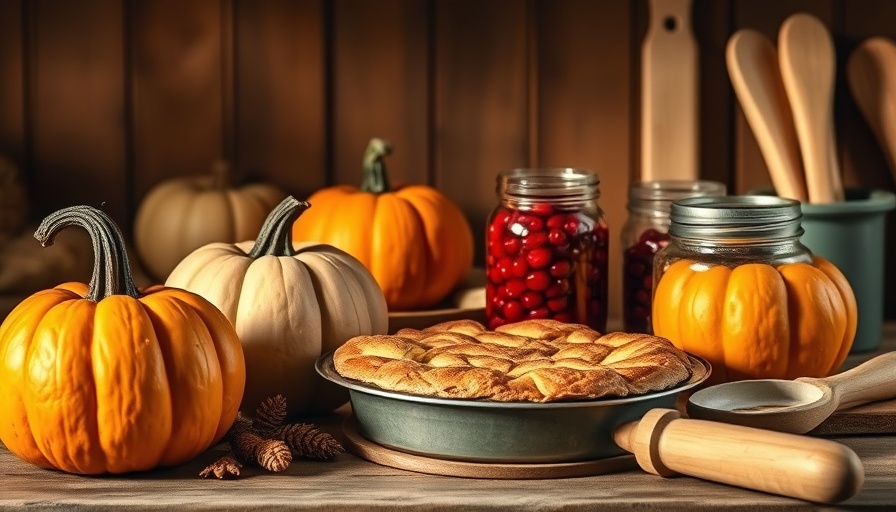
Why Choosing the Right Pumpkin Matters
When it comes to baking delicious pies, not all pumpkins are created equal. The common misconception that the biggest pumpkins are best for pies often leads to disappointment, as many large varieties tend to be watery and stringy. The right choice starts with understanding the types of pumpkins cultivated specifically for culinary use. These varieties not only yield a rich and sweet flavor but also contribute to satisfying textures that elevate your homebaked goods.
Top 11 Pumpkins for Baking Bliss
Here are the eleven best pie pumpkins to grow, guaranteed to impress during the autumn harvest:
- Baby Bear: This compact variety is frost-tolerant and perfect for smaller gardens, producing 10-20 cute pumpkins per plant. With its sweet orange flesh, it’s just right for pies and desserts.
- Cinderella: Known for its unique flattish shape and deep ribs, this pumpkin is a showstopper in the garden and the kitchen, perfect for a decadent pie.
- Dickinson: Often considered the gold standard, Dickinson pumpkins are sweet, dense, and perfect for puree, making them a favorite among bakers.
- Early Sweet Sugar Pie: Quick to mature, this pumpkin variety boasts a compact size and a superb flavor ideal for quick baking.
- Galeux d’Eysines: With its interesting bumpy skin, this variety hides a sweet, flavorful flesh that makes an exceptional filling for pies.
- Jarrahdale: This striking blue-grey pumpkin is not just visually appealing; its sweet, dense flesh works wonders in baking.
- Musquee de Provence: This French favorite has a rich, sweet taste and works well in both sweet and savory dishes.
- Orange Smoothie: Known for its vibrant color and sweetness, it’s excellent for baking and decorating alike.
- Small Sugar: This variety is a gardener's delight, yielding multiple mini pumpkins perfect for individual servings.
- Spookie: Its sweet flesh makes it an ideal dual-purpose pumpkin, perfect for pies and festive decoration.
- Triple Treat: Featuring a blend of flavor, decoration, and easy care, this pumpkin stands out in the garden and the pot.
Understanding Pumpkin Types
The complexity of pumpkin types often leads to confusion. While all pumpkins are technically a subset of winter squash, the distinctions matter significantly when it comes to flavor and cooking properties. For instance, varieties like Cucurbita pepo tend to be milder and sweeter, while C. moschata offers a richer flavor—ideal for pie making. By planting the right type, you ensure that the final result is a pumpkin pie filled with dense, creamy goodness.
Tips for Planting and Care for Successful Harvests
To get the best pumpkins from your garden, consider the following tips:
- Site Selection: Ensure your pumpkins receive full sun for at least 6-8 hours a day.
- Soil Quality: Well-draining, nutrient-rich soil is vital. Consider adding compost to improve soil health.
- Watering: Consistent watering helps grow robust plants, especially during dry spells.
- Pest Control: Keep an eye out for common garden pests and use organic pest control methods to maintain plant health.
Harvesting and Using Your Pumpkins
Once your pumpkins are mature, it’s time for the exciting part—harvesting! Cut the stem of the pumpkin and allow them to cure in the sun for a few days to enhance their flavor. Pumpkin puree adds a taste of fall to various recipes, from pies to soups. If you’re unsure how to make your own puree, check sources that guide you through the process.
Conclusion: Your Perfect Pumpkin Awaits!
Growing the right pumpkins means you can treat your family and friends to delicious fall recipes that shine with homegrown ingredients. Imagine the taste of a freshly baked pumpkin pie made from your own harvest! Beginning your journey as a pumpkin grower is just an arm's reach away—embrace these tips to start cultivating your very own pie pumpkins!
 Add Row
Add Row  Add
Add 




Write A Comment